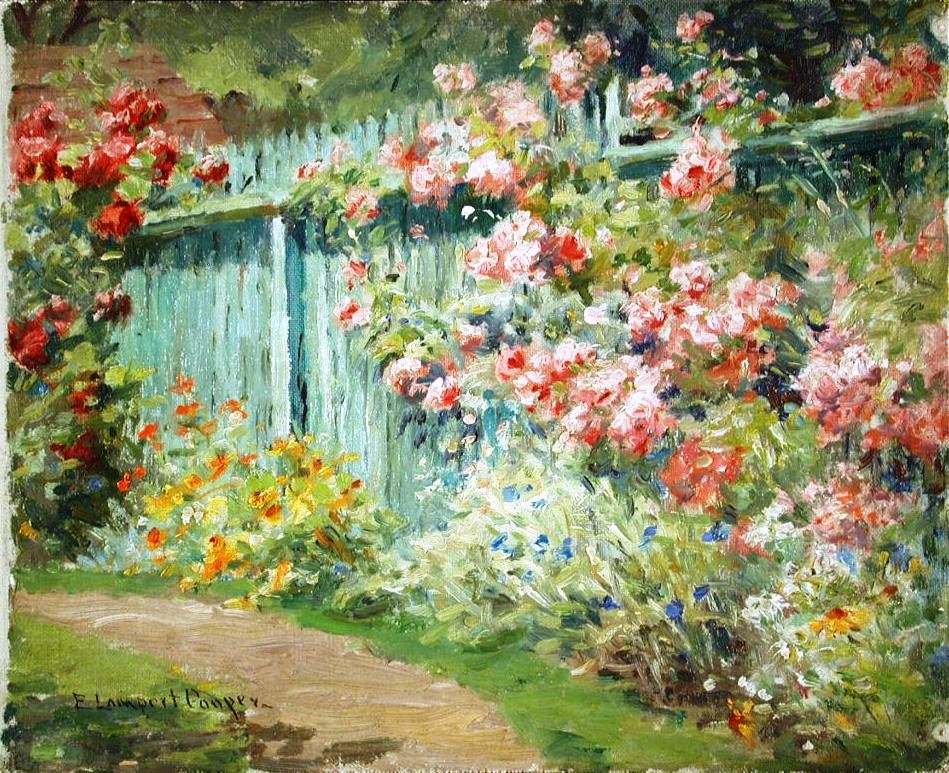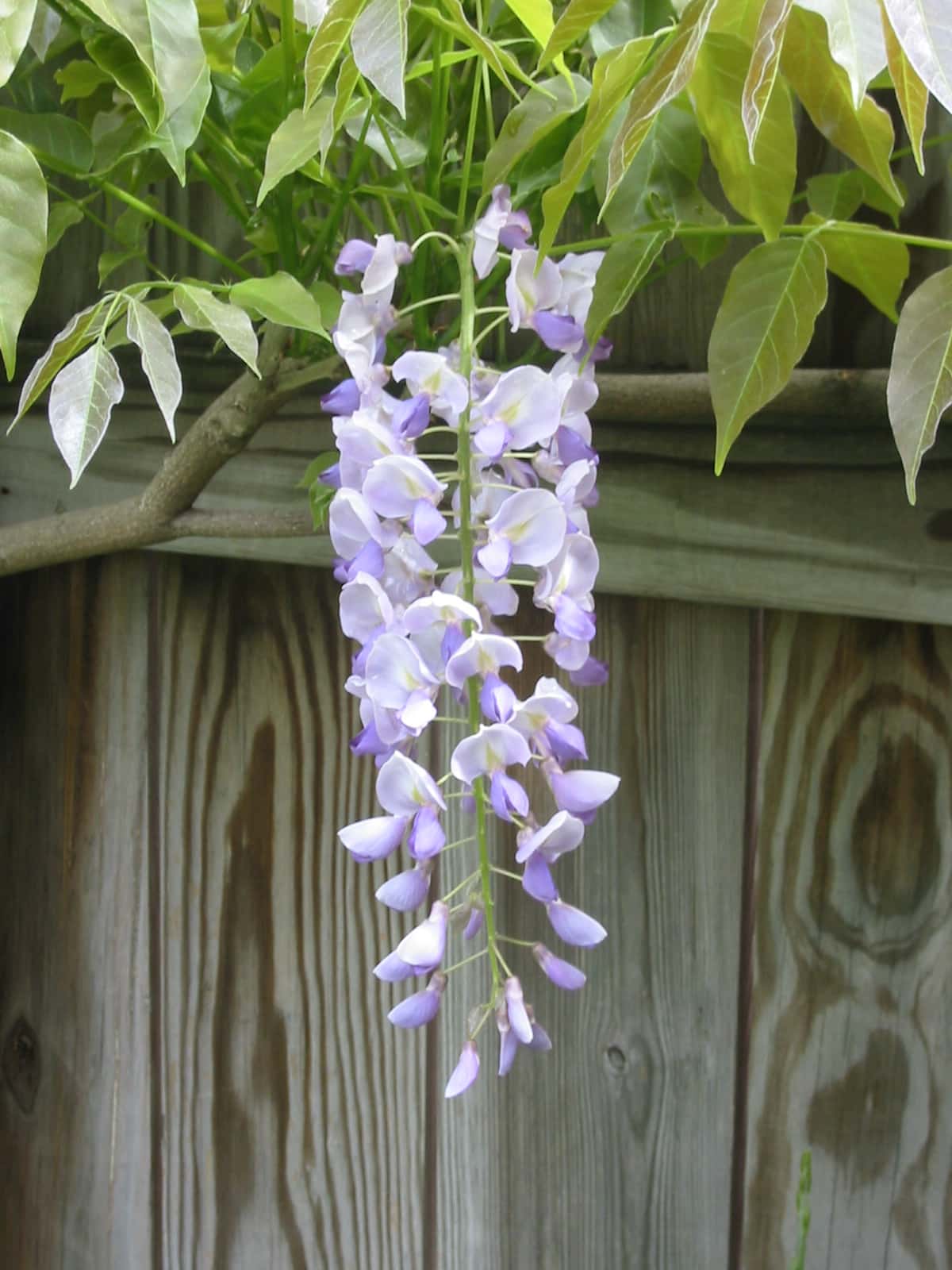 Most of my colleagues and friends know this about me: I am a gardener. Except during winter, you’ll find me in my garden whenever I have a spare moment. Gardening ranks as one of the most popular forms of adult leisure, so I know I’m not alone in my hobby. My gardening enthusiasm also links me to the museum’s founder, Margaret Strong, who loved cultivating her home’s landscape.
Most of my colleagues and friends know this about me: I am a gardener. Except during winter, you’ll find me in my garden whenever I have a spare moment. Gardening ranks as one of the most popular forms of adult leisure, so I know I’m not alone in my hobby. My gardening enthusiasm also links me to the museum’s founder, Margaret Strong, who loved cultivating her home’s landscape.
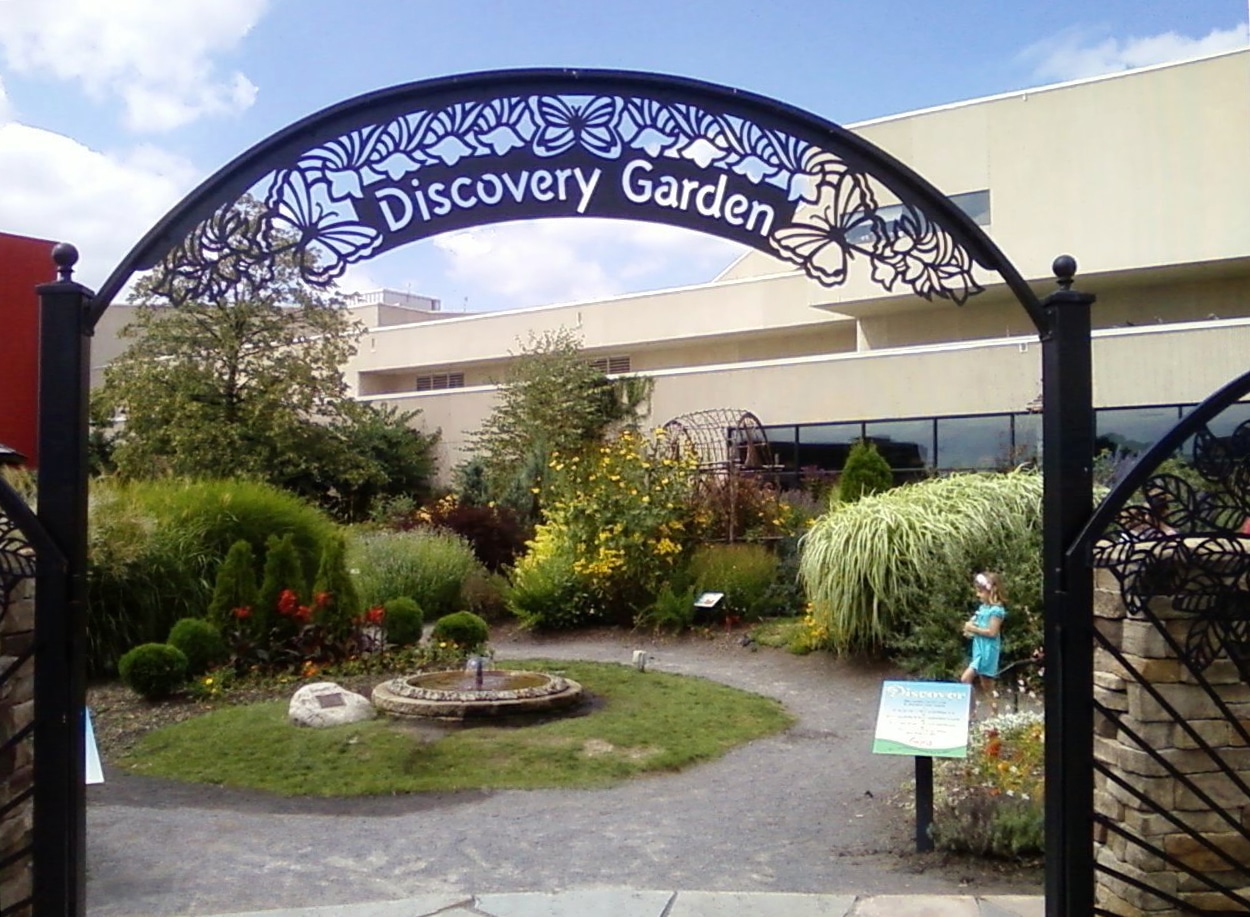 When I can’t be in my own garden, I find other gardens to enjoy. One of my favorite places is the museum’s own Discovery Garden, which guests pass on their way to the main entrance. In season, it’s free and open during museum hours. Designed to attract butterflies and birds, the Discovery Garden serves as an official monarch butterfly way station and educates our guests about growing various plants and flowers.
When I can’t be in my own garden, I find other gardens to enjoy. One of my favorite places is the museum’s own Discovery Garden, which guests pass on their way to the main entrance. In season, it’s free and open during museum hours. Designed to attract butterflies and birds, the Discovery Garden serves as an official monarch butterfly way station and educates our guests about growing various plants and flowers.
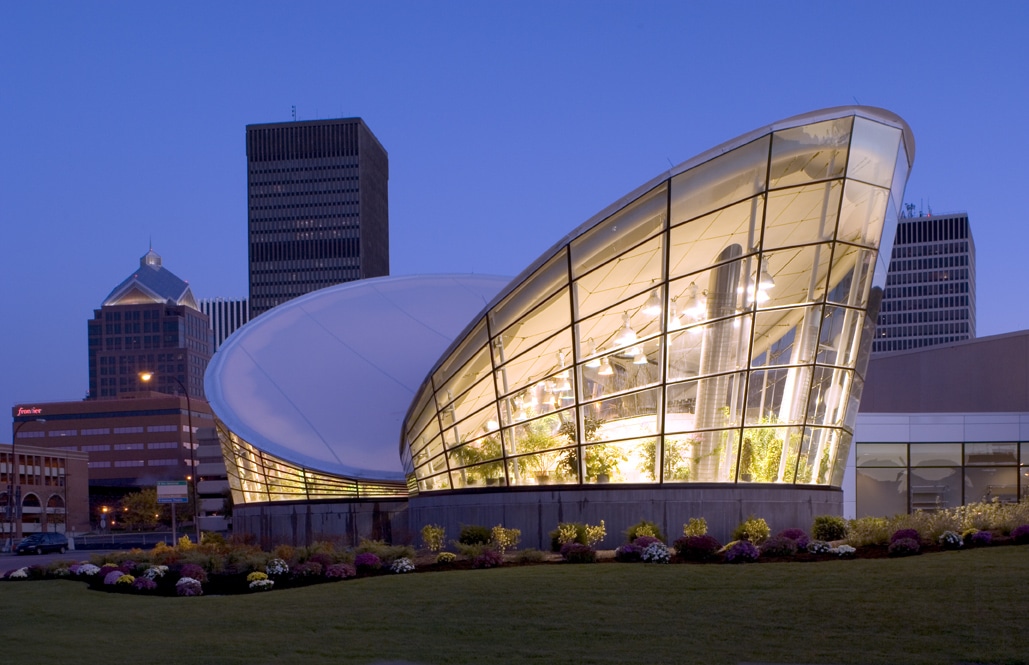 I can also find a beautiful garden and fluttering butterflies inside the museum, regardless of the season. The Dancing Wings Butterfly Garden® offers lush tropical flora along with stunning butterflies, all housed in a remarkable butterfly-shaped building. Come February, when my garden’s covered with snow and even the house plants are drooping, a visit to Dancing Wings Butterfly Garden is guaranteed to raise my horticultural spirits.
I can also find a beautiful garden and fluttering butterflies inside the museum, regardless of the season. The Dancing Wings Butterfly Garden® offers lush tropical flora along with stunning butterflies, all housed in a remarkable butterfly-shaped building. Come February, when my garden’s covered with snow and even the house plants are drooping, a visit to Dancing Wings Butterfly Garden is guaranteed to raise my horticultural spirits.
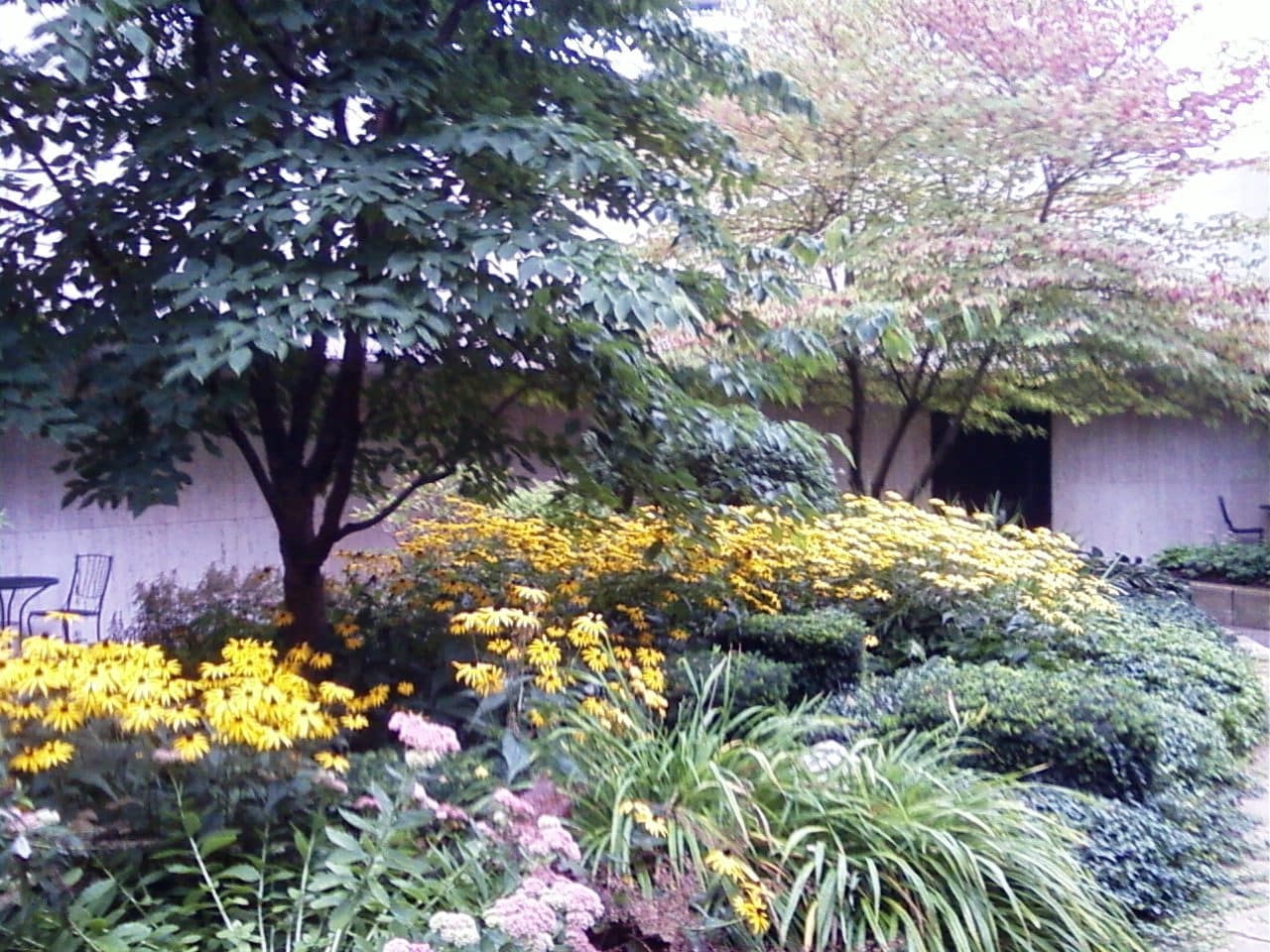 On my lunch hour, I sometimes explore a garden hidden in the nearby HSBC office building. Underground, but open to the sky, the garden’s architecture follows the building’s structure. The circular opening is too tall to see into from the street, so the only way to see this garden is from the building’s concourse level. It’s a very peaceful space right in the middle of downtown.
On my lunch hour, I sometimes explore a garden hidden in the nearby HSBC office building. Underground, but open to the sky, the garden’s architecture follows the building’s structure. The circular opening is too tall to see into from the street, so the only way to see this garden is from the building’s concourse level. It’s a very peaceful space right in the middle of downtown.
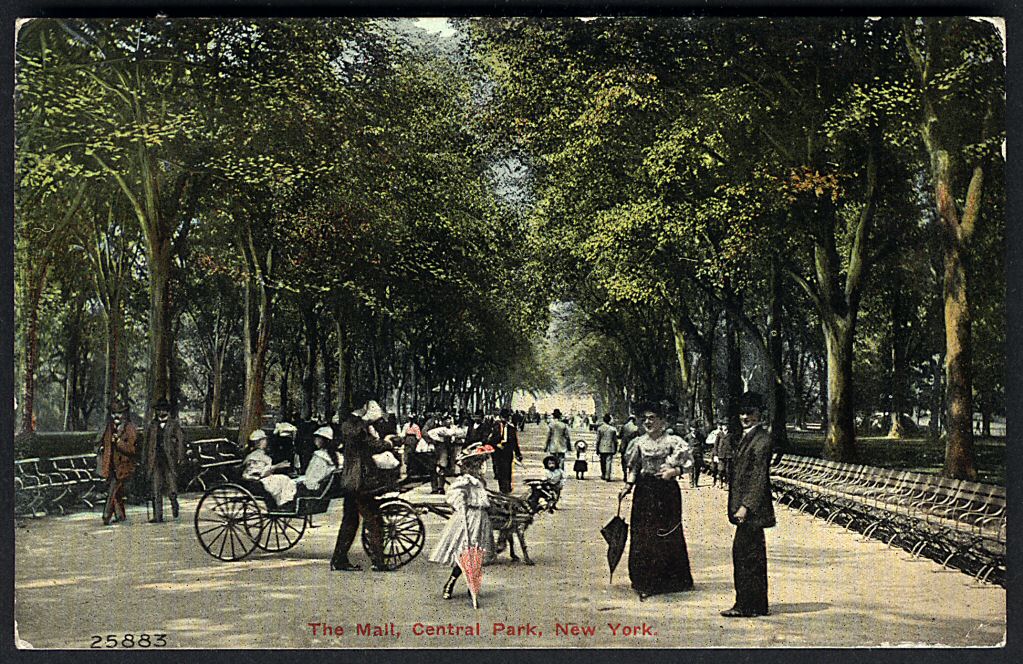
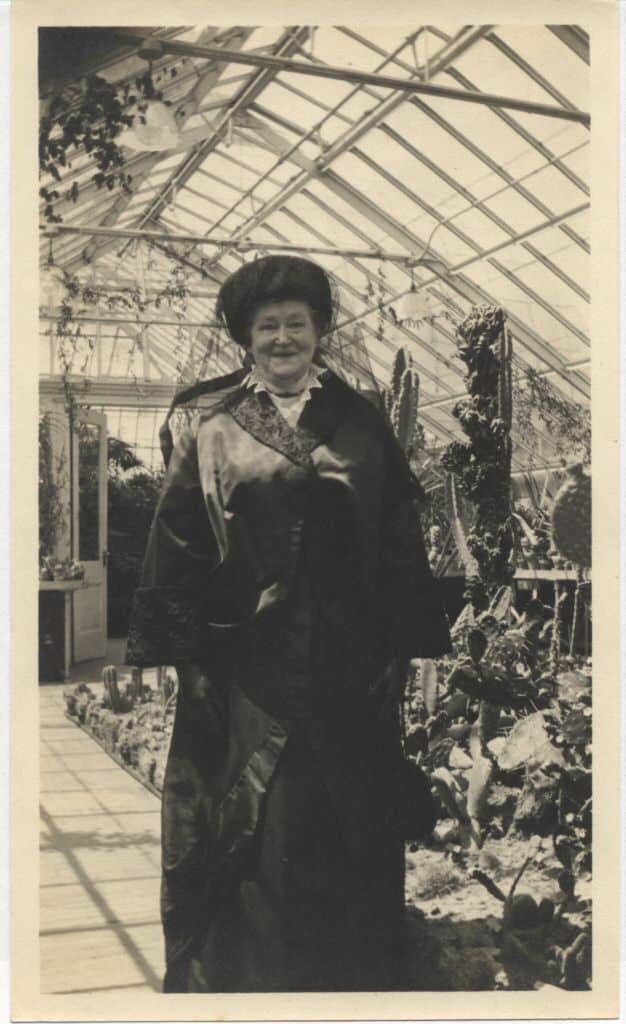 Urban gardens and parks like these are nothing new. After Frederick Law Olmsted designed New York’s Central Park more than 150 years ago, park development blossomed in cities and towns throughout the United States. Rochester’s landscape includes a variety of public gardens and parks, some historic, some new, and some even designed by Olmsted. Across the years, everyday Americans have also created gardens to share and more private planted spaces around their homes. Hundreds of artifacts in the collections at Strong National Museum of Play® help document both public and private gardening and the many ways that Americans enjoyed this evergreen pastime. And we’re always interested in considering additional examples of gardening objects, photographs, and printed materials—in case there’s something you’d like to donate. Just let us know at collections@museumofplay.org.
Urban gardens and parks like these are nothing new. After Frederick Law Olmsted designed New York’s Central Park more than 150 years ago, park development blossomed in cities and towns throughout the United States. Rochester’s landscape includes a variety of public gardens and parks, some historic, some new, and some even designed by Olmsted. Across the years, everyday Americans have also created gardens to share and more private planted spaces around their homes. Hundreds of artifacts in the collections at Strong National Museum of Play® help document both public and private gardening and the many ways that Americans enjoyed this evergreen pastime. And we’re always interested in considering additional examples of gardening objects, photographs, and printed materials—in case there’s something you’d like to donate. Just let us know at collections@museumofplay.org.




